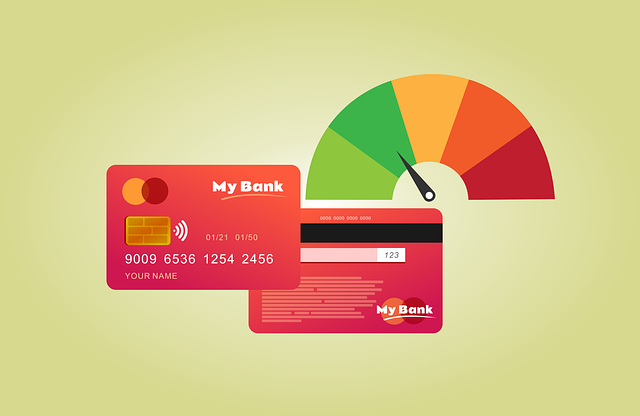What is the Importance of Retained Earnings for Small Businesses?

Retained earnings are significant for small businesses. They represent the profits the company has reinvested instead of giving to owners or shareholders. These retained earnings play a crucial role in the financial health of a business.
Strengthening Financial Health and Increasing Working Capital
By retaining earnings, small businesses can bolster their financial health. Instead of immediately paying out all net earnings to owners or shareholders, these funds are retained within the company as dividends. This allows businesses to build up their working capital, which is the money available for day-to-day operating expenses and future investments.
Future Expansion and Investment Opportunities
Retained earnings provide small businesses with a valuable source of internal financing. With a healthy balance in the retained earnings account, companies have more flexibility to pursue expansion opportunities or invest in new projects. Whether opening a new location, purchasing equipment or launching a marketing campaign, having retained earnings on hand can make these endeavors possible.
A Measure of Success and Stability
The figure representing retained earnings on the earnings statement reflects the accumulated profits over time. It serves as an indicator of success and stability for business owners.
High retained earnings indicate the company is more profitable and financially secure. This can inspire confidence among stakeholders such as investors, lenders, and potential partners.
How do I Calculate Retained Earnings?

Calculating retained earnings is a simple process if you accurately track your finances. Here’s a step-by-step guide to how it’s done:
- Find the beginning-period retained earnings balance: Look at the previous period’s balance sheet or financial statements to locate the starting point for your retained earnings. It’s usually found in the shareholders’ equity section.
- Determine net income: Review your income statement or profit and loss statement to find the company’s net income for the current period. Net income represents the revenue generated by your business minus any expenses incurred.
- Subtract dividends: Identify any dividends paid to shareholders during the previous accounting period. Dividends are a portion of profits distributed to owners or investors.
- Apply the retained earnings formula: Use this formula to calculate retained earnings: Beginning Retained Earnings + Net Income – Dividends = Ending Retained Earnings.
- Calculate ending retained earnings: Add the beginning retained earnings balance with net income, then subtract any dividends paid out during the period. The resulting figure will be your ending retained earnings balance.
What’s the Relationship between Retained Earnings and Market Value?
Retained earnings are a crucial aspect of assessing a company’s financial health. Let’s explore the relationship between retained earnings and market value in more detail.
Reflecting Past Performance: The retained earnings account, found on the balance sheet, provides a cumulative total of all past retained earnings. It shows how much profit has been generated by the company over time and how much has been reinvested into the business. This figure highlights the long-term financial stability and growth potential of a company.
Assessing Financial Health: Understanding the relationship between retained earnings and market value is essential for evaluating a company’s financial health. When a company consistently generates positive net income and retains those earnings, it demonstrates profitability and efficiency in its operations. Investors often view companies with higher retained earnings favorably because they indicate stability, growth potential, and effective management.
Limitations of Retained Earnings: While retaining earnings benefits long-term growth prospects, it also poses challenges when balancing dividend distributions with investment opportunities. Companies must balance rewarding shareholders through dividends and allocating funds for future growth initiatives. Failure to find this equilibrium may lead to dissatisfaction among investors or missed expansion opportunities.
How do Small Businesses use Retained Earnings?

Retained earnings are like the secret stash of money a small business keeps hidden away. But what can you actually do with these retained earnings?
Here are some key approaches to consider.
Reinvest Profits for Growth Opportunities
One way to maximize retained earnings is by reinvesting your profits into the business. By doing so, you can increase working capital and fund growth opportunities. This means using the money earned from previous successful ventures to expand your operations or launch new products or services.
Paying Off Debts and Improving Financial Position
Another smart way to use retained earnings is by paying off debts. It’s like clearing up those pesky credit card bills so you can start fresh. By using your retained earnings to pay off loans or outstanding balances, you’re reducing interest payments and improving your company’s financial position.
Increasing the Company’s Savings
When a company generates net income, it adds to its retained earnings balance, effectively increasing its savings. This surplus can be a financial cushion during challenging times or be used strategically for future investments. By accumulating retained earnings over time, businesses can build their financial reserves and strengthen their overall financial position.
Explore Investment Options for Additional Income
Consider exploring investment options that can generate additional income from retained earnings. For example, you could invest in stocks or bonds.
Investing part of your retained earnings can diversify your income streams and potentially earn higher returns. However, it’s essential to carefully assess risks and seek professional advice before making investment decisions.
Frequently Asked Questions
Here are the most common questions about retained earnings for small businesses.
What’s the difference between Revenue, Net Profit, and Retained Earnings?
Understanding the financial aspects of a small business can be pretty confusing. There are different terms like revenue, net profit, and retained earnings that may seem similar but actually have distinct meanings.
Revenue: Revenue is all about the money coming into a business. It represents the total income generated from its operations. Think of it as the money your business brings in before any expenses are deducted.
Net Profit: Net profit, also known as net earnings or net income, is what’s left after subtracting all expenses from revenue. It’s like figuring out how much money you have in your pocket after paying for all your bills and other costs.
Retained Earnings: This refers to the portion of net profit that is reinvested back into the business rather than distributed to shareholders as dividends (a fancy word for profits given to owners). It’s like saving some of your hard-earned cash instead of spending it all at once.
What’s the Difference between Retained Earnings and Dividends?
Dividends are payments made by a company to its shareholders from its profits or retained earnings. It’s sharing the success of your business with those who have invested in it. Dividends can be paid out in different ways, such as cash dividends or stock dividends. Typically, a company has lower retained earnings the more dividends it pays out.
The main difference between retained earnings and dividends lies in how they are allocated. Retained earnings stay within the company and are reinvested for various purposes, such as expanding operations, purchasing new equipment, or paying off debt. On the contrary, dividends are distributed to shareholders as a way of rewarding their investment in the company.
Retained Earnings vs Dividends Pros & Cons
Here are the pros and cons of using profits for retained earnings vs dividends.

Pros:
- Allows the company to reinvest in its operations and fuel growth.
- Provides a cushion for future financial needs or unexpected expenses.
- Enables the company to maintain control over its financial resources.
- Can increase the company’s value over time.
Cons:
- Shareholders may prefer receiving immediate cash dividends.
- Can lead to a decrease in shareholder satisfaction or interest in the company.
- May limit the ability to attract new investors who are seeking regular income.
- Could result in missed investment opportunities outside of the company.
How often should I calculate my Retained Earnings?
It’s recommended to calculate your retained earnings at least once a year or during your accounting period (accounting cycle) when preparing your annual financial statements. However, it’s also beneficial to track them regularly throughout the year to monitor the growth of your business and make informed decisions accordingly.
Are there any tax implications when using Retained Earnings?
Retained earnings themselves do not have direct tax implications since they represent after-tax profits already earned by the business. However, when those accumulated profits are distributed as dividends in the future, they may be subject to dividend taxes depending on applicable tax laws and regulations.
What if my business has negative Retained Earnings?
Negative retained earnings indicate that a company has accumulated losses over time exceeding its profits. This situation can arise from various factors such as sustained losses, dividend payments exceeding profits, or accounting adjustments. It’s crucial to address negative retained earnings promptly by implementing strategies to improve profitability and restore financial stability.
Retained Earnings – Final Thoughts

By calculating and effectively utilizing retained earnings, you can fuel your business growth and secure its financial stability. Remember, retained earnings are the profits you choose to reinvest into your company rather than distributing them as dividends. This strategic approach allows you to fund expansion, invest in new opportunities, and weather unexpected challenges.
Now that you have this knowledge, it’s time to implement it. Start by assessing your current financial position and determining how much you can allocate towards retained earnings.
Then, explore different strategies for utilizing these funds wisely, such as investing in research and development or acquiring new assets. By making informed decisions about your retained earnings, you’ll pave the way for long-term success and prosperity in your small business journey.
Contact us if you have more questions about retained earnings or to apply for a small business loan. Our alternative funding experts can help you find the best financing options for business growth.











